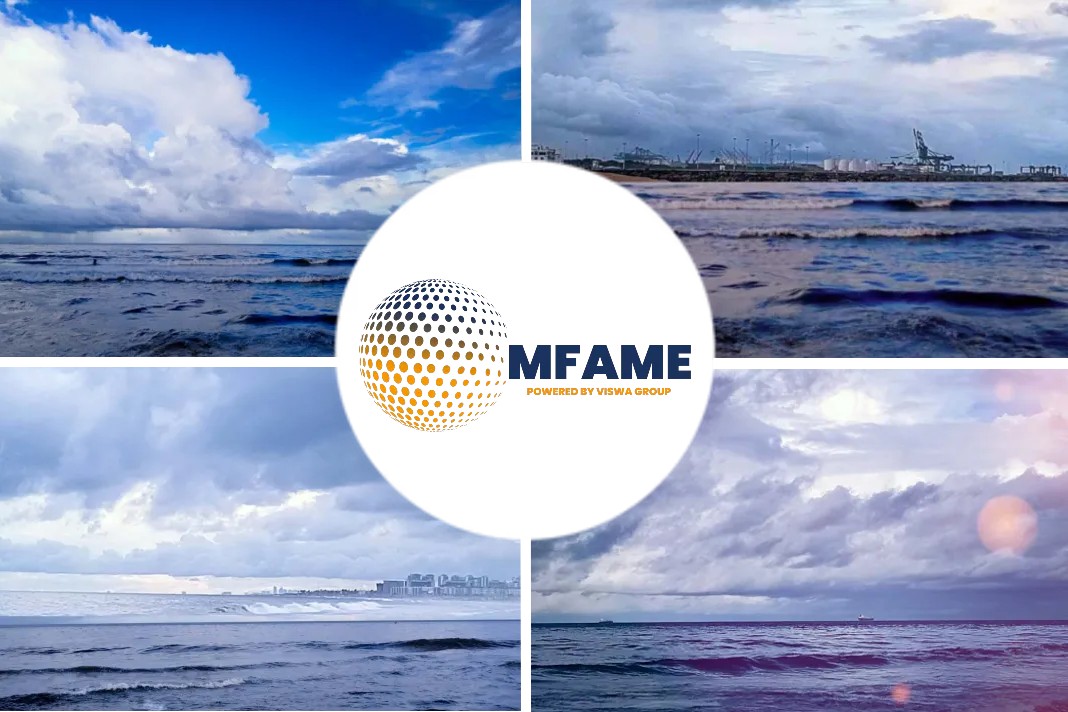 While the series of catastrophic containership fires experienced during 2019 has, happily, not been repeated this year, there is no room for complacency. The incidence of lesser fires and emergencies persists, says an article published on ttclub website.
While the series of catastrophic containership fires experienced during 2019 has, happily, not been repeated this year, there is no room for complacency. The incidence of lesser fires and emergencies persists, says an article published on ttclub website.
Hazard involved in the transport of dangerous
The May 2021 fire and subsequent sinking of ‘Xpress Pearl’ provides adequate reminder of the complexities involved in the transport of dangerous goods (DG). Action taken at the end of July in strikingly similar circumstances averted ‘Seaspan Lahore’ becoming another casualty. Earlier in July, an explosion and fire occurred on board ‘Ocean Trader’ whilst berthed at Jebel Ali.
All these ships were of modest or even small TEU capacities, but the incidents supremely display the TT-coined term of ‘adjacency risk’ – being the hazard that may be presented by even one cargo or package, within one container whilst amongst a stack of units, whether on board a ship or in a terminal yard.
Screening controls
Container carriers have continued strenuous efforts in screening cargo bookings, benefitting from the pioneering work by Hapag-Lloyd with its Cargo Patrol tool. While developments across the industry have proliferated, including the launch last year of both ZimGuard and Hazcheck Detect, it is likely that the most exciting advances are just around the corner, particularly embracing machine learning methodologies.
Many existing screening tools are built around keyword searches, which are effective for known or emerging synonyms; machine learning can not only improve the depth of historical understanding, but also plug in the plethora of public source trade data and private commercial data.
Inspection status
Twinning screening alerts with targeted inspections has, however, proven effective and has the potential to lead to an improvement cycle whereby safety practices are embraced and adopted to the benefit of all involved.
Remember, though, that the hardened wrong-doer will always seek the weakest link and the freight will still move – with the constant risk from sharing arrangements that it will fall back on the carrier who first called it out.
“Targeted inspections… has the potential to lead to an improvement cycle”
From a regulatory perspective, states are urged by the International Maritime Organization (IMO) to carry out inspections in accordance with the guidelines set out in MSC.1/Circ.1442 (“Inspection programmes for cargo transport units carrying dangerous goods”).
While this IMO Circular remains in a protracted amendment cycle (due to COVID disruptions), reporting over the last two calendar years has regrettably decreased, both in terms of the number of states apparently engaged and also the absolute number of units inspected. Despite any pandemic mitigating factors applying in 2020, this situation underlines IMO’s own admission that it has insufficient data on which to base decisions – effectively rudderless for the regulation of containerised cargo.
Condition monitoring
Apart from screening, there are numerous innovations in varying degrees of development and deployment that could assist the industry in preventing avoidable incidents, some being targeted at early detection or response on board ship, others monitoring conditions throughout the supply chain or seeking to enhance cargo protection where required.
“There are numerous innovations… that could assist the industry in preventing avoidable incidents”
In the context of DG, adoption of ‘smart’ containers, with capability to monitor and communicate against specific parameters, clearly could be compelling; some estimates suggest that as much as 5% of the global intermodal container fleet could now be ‘smart’, although biased towards temperature controlled units.
Additional packaging or linings are able to be installed that mitigate significant temperature or moisture fluctuations; these should be included in risk assessments for cargoes known to be sensitive, whether to deterioration or decomposition.
Furthermore, heat sensing technologies could potentially be deployed, for example in terminal handling areas, to identify units varying significantly from ambient conditions.
Regulatory competence
Transport of Dangerous Goods ultimately falls within the remit of a detailed regulatory environment, each mode derived from the overarching UN Model Regulations. While the specific regulations for each mode require adherence, particular focus is required in the intermodal supply chain on that applying for carriage by sea – the International Maritime Dangerous Goods (IMDG) Code.
The TT/UKP&I ‘Book it right and pack it tight’ guide provides an overview of the key practical duties under the IMDG Code for all stakeholders. Due to delays encountered in finalising Amendment 40-20 during the pandemic, the IMO determined that Amendment 39-18 may continue to be used until the end of May 2022, and the latest Amendment will be enforced from 1 June 2022.
Summary
- While the series of catastrophic containership fires experienced during 2019 has, happily, not been repeated this year, there is no room for complacency.
- The May 2021 fire and subsequent sinking of ‘Xpress Pearl’ provides adequate reminder of the complexities involved in the transport of dangerous goods.
- Container carriers have continued strenuous efforts in screening cargo bookings, benefitting from the pioneering work by Hapag-Lloyd with its Cargo Patrol tool.
- Apart from screening, there are numerous innovations in varying degrees of development and deployment that could assist the industry in preventing avoidable incidents.
Did you subscribe to our daily newsletter?
It’s Free! Click here to Subscribe!
Source: ttclub.com














